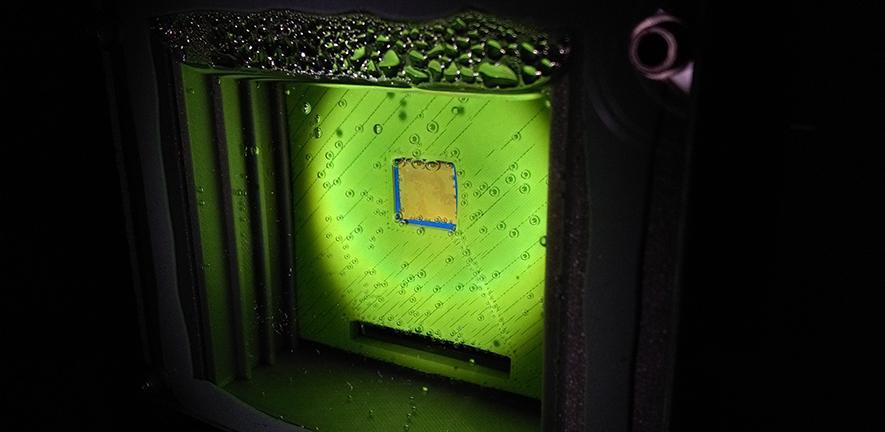
A widely-used gas that is currently produced from fossil fuels can instead be made by an ‘artificial leaf’ that uses only sunlight, carbon dioxide and water, and which could eventually be used to develop a sustainable liquid fuel alternative to petrol.
The carbon-neutral device sets a new benchmark in the field of solar fuels, after researchers at the University of Cambridge demonstrated that it can directly produce the gas – called syngas – in a sustainable and simple way.
Rather than running on fossil fuels, the artificial leaf is powered by sunlight, although it still works efficiently on cloudy and overcast days. And unlike the current industrial processes for producing syngas, the leaf does not release any additional carbon dioxide into the atmosphere. Syngas is currently made from a mixture of hydrogen and carbon monoxide, and is used to produce a range of commodities, such as fuels, pharmaceuticals, plastics and fertilisers.
“You may not have heard of syngas itself but every day, you consume products that were created using it. Being able to produce it sustainably would be a critical step in closing the global carbon cycle and establishing a sustainable chemical and fuel industry,” said senior author Professor Erwin Reisner (Department of Chemistry), who has spent seven years working towards this goal.
Other ‘artificial leaf’ devices have also been developed, but these usually only produce hydrogen. The unique reason for the syngas being sustainably produced is due to the combination of materials and catalysts they used.
The research was also funded by the Winton Programme for the Physics of Sustainability, the Biotechnology and Biological Sciences Research Council, and the Engineering and Physical Sciences Research Council.
Click here for the Nature publication for "Bias-free solar syngas production by integrating a molecular cobalt catalyst with perovskite–BiVO4 tandems".
Click here to for the full University of Cambridge article.
Image credit: Virgil Andrei

